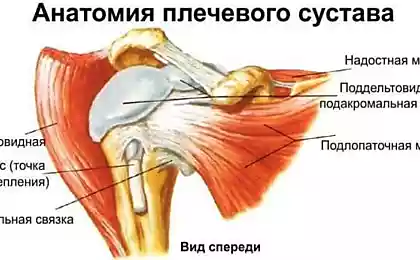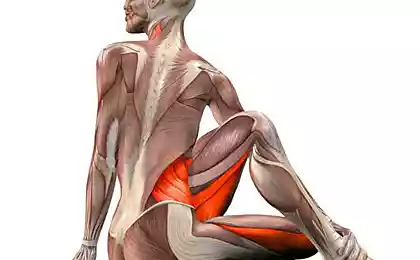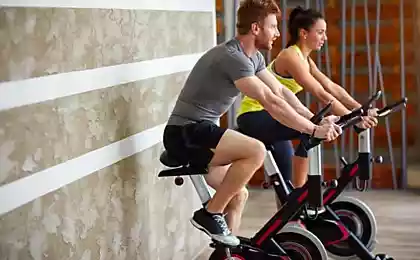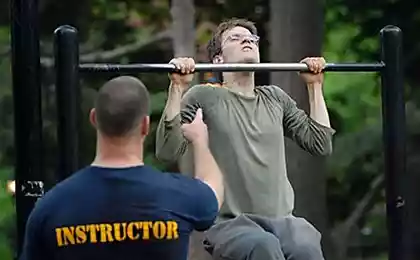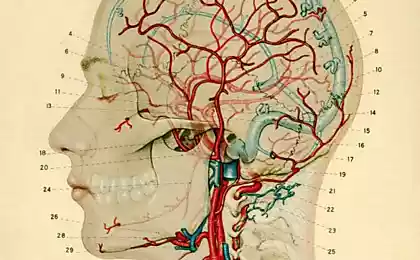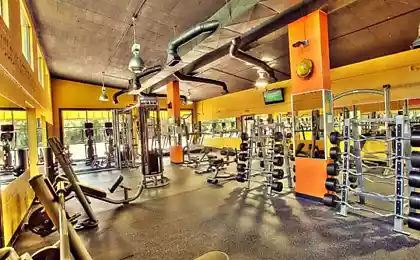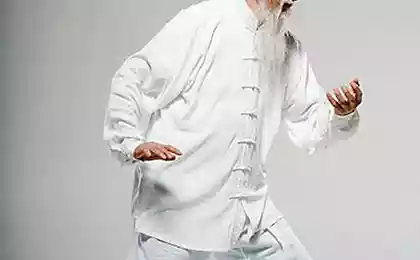887
7 types of "stupid" exercise
Here is a translation of the textof a coach 2016 of the year by the NSCA nick Tumminello about the most useless exercises. Pass the word to the expert.
The Internet is full of articles about stupid and dangerous exercises that people do in fitness halls. Unfortunately, in most of them the authors only criticize what we don't like them personally, without giving any scientific evidence.
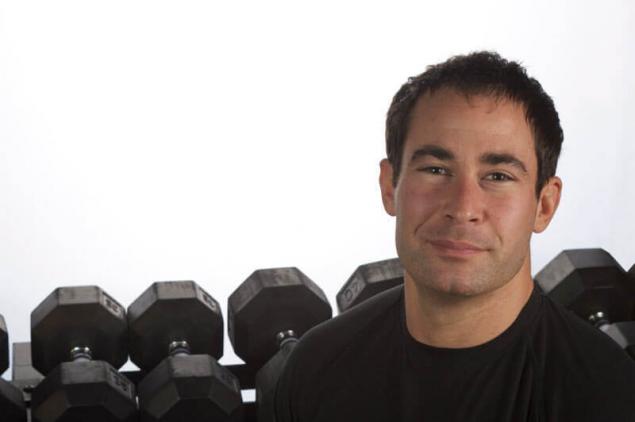
Simulators in the list
Start with the fact that many just are entered in the black list of exercises in the gym, for example, for information and breeding of the feet. However, studies show that although sit-UPS in a wide stance activation of the adductors (3), the highest EMG value obtained in squats, squats on one leg and thrusts lower than in isolated information (5) — so a simulator in the activation of some specific muscles superior to squats and lunges.
There is usually mind that is important, not the activation of individual muscles and practicing certain movements, the exercise equipment is not functional and does not help our body it is better to run, jump, Crouch and so on.
Several studies have shown that training on simulators improve various indicators, including the height of the jump, the number of squats without weights for 30 seconds and speed in sprint (6).
So, let's see, separating the misconceptions from the real evidence, what should be avoided.
1. Any exercise with the purpose of the point weight loss
The most common example is the implementation of the same information of the feet with the purpose of the point to burn fat on inner thighs. As you can see, the purpose of the activity depends on the context: although the simulator is useful (see above), be into it for local fat burning is stupid.
Remember that local fat loss is not working (the link — a review of research on the subject).
Yes, one study of 2007 concluded that "exercise may cause a local lipolysis and increase blood flow in fatty tissue, are located near the redundant muscles" (7). But this does not mean the conclusion, though certain exercises provide the burning of fat in the chosen field. Even if I point the mobilization of body fat was physiologically possible, that you, diligently performing mnogocwetnye and isolation exercises, you have already received would be a noticeable effect of this phenomenon.
If someone wants to say that certain training methods (miracle exercises, the Protocol execution, or something else) lead to the point of burning, he must prove it by conducting carefully controlled experiments.
By the way, the scientific approach is to consider all studies and not finding the right with the desired results. The work of the same 2007 year of the journal Medicine and Science in Sports and Exercise States: "the MRI showed a General reduction in body fat in participants of both sexes, confirming the position that the training does not cause local fat burning" (8).
The same study says the 2013 year: "Training has led to an overall decline in the percentage of fat, but not to a local reduction in the working part of the body" (9).
Another work of 2011 to study the effects of exercise on body fat in the waist: "a six-week program of the exercises for the abs did not cause reduction of subcutaneous fat in the abdomen or other changes in body composition" (10). Not to mention the ancient study of 1984, which also claimed that "Performing regular sit-UPS does not lead to a preferential reduction of fat cells in the abdominal region compared to other parts of the body" (11).
In short, nothing happens. Even if we accept that in sediments near train muscles mobilization of fat increases, the work done is not enough for any noticeable physical changes.
2. Exercises are meaningless from the point of view of biomechanics
As example, take the inclinations in the parties with dumbbells in both hands: when you perform a burdening in one hand offsets the load from the weights in the other. And lateral flexors of the trunk are working less than in the variant with a dumbbell in one hand (will not go into the discussion whether you want to do exercises with lateral flexion of the spine, is a topic for another article).
Another common but useless movement – breeding with dumbbells for shoulder rotator cuff, when the body vertical, arms bent at right angles and elbows close to the body:
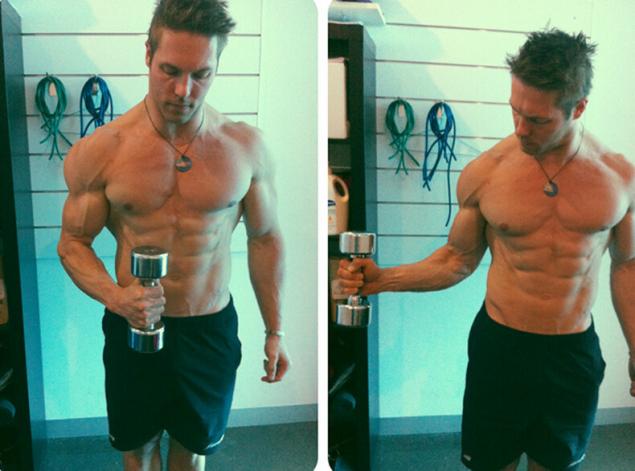
So you get just the isometric lifting on a biceps. Of course, the rotators of the shoulder are also involved, but they need a load in the horizontal plane, and in this embodiment, gravity provides the vertical. To do rotator cuff work, you need to perform this movement on a block simulator or with a bundle fixed on the side of the height of the elbow.
Or, continuing with a dumbbell, lie down sideways on the bench:
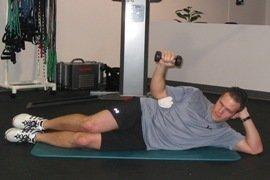
Biomechanically stupid traffic can be found in the cardio zone. On an inclined treadmill, for example, the people often treading water, holding hands on the handrail and leaning back. As a result, they receive no additional benefit from running uphill, because the body remains at the same angle to the blade, and a horizontal track:
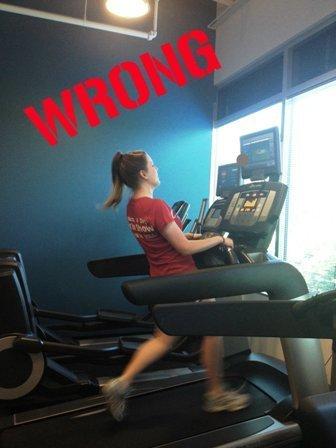
3. Exercise, the risks of which exceed the benefits
Training on unstable surfaces may be useful when recovering from injuries of the hip joints, knees and ankles. Or if you need to improve the coordination and just love on them to balance – you can have fun between sets in strength exercises or as a cool down.
However, returning to the topic of this article, it is not necessary to raise the iron, staggering on the platform or an exercise ball:
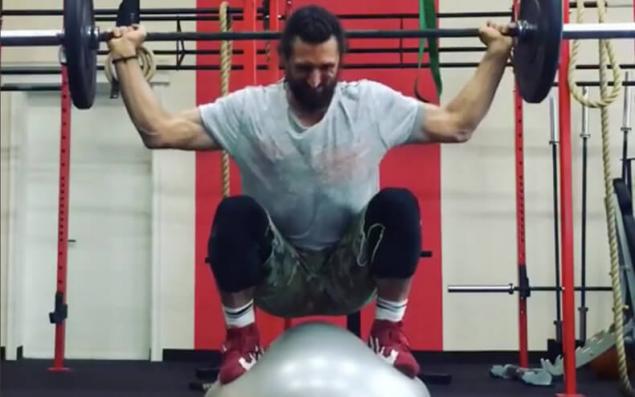
In 2009, the NBA basketball player Francisco Garcia, who signed a 5-year contract for $29.6 million, missed most of the season, breaking the wrist on this exercise. Weighing 88 kg, Garcia pressed two dumbbells of 40 kg, while lying on the exercise ball when the exercise ball burst.
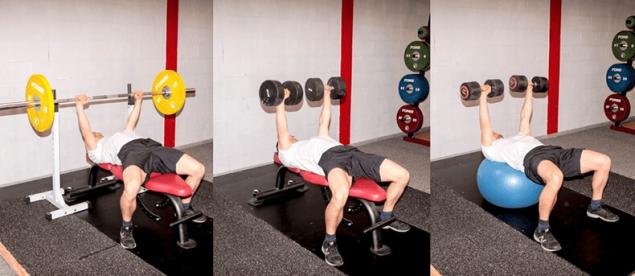
The "unstable" version of the exercises on the right.
Most people come to the gym to get stronger, to gain muscle or lose weight. If this is your goal, it is wiser and safer to train with weights, standing on the good old floor.
For high scores you need to generate maximum force to mass is to overload the muscles, but neither the one nor the other unstable surface will not help (12, 13).
Functional training is a positive transfer to sport performance and physical performance, so that more "functional" — to lift more iron on a stable surface.
Exercises on the fitball does not increase the ability to generate strength and improve neuromuscular coordination to the same extent that normal movements like running, jumping, shooting and so on. Even if you're not a fan of research, common sense and intuition suggest that we should not raise over a serious weight, lying down, standing or sitting on a fitball. Whatever imaginary bonuses, the risks outweigh.
4. Exercises that cause pain
As I write in my book, Muscle Building and Performance: if the exercise causes pain – for whatever reason – pick a different variation or replace the movement. Of course, I don't mean pain in the muscles associated with intensive work in the gym. We are talking about injuries that make themselves felt both at training and outside the hall. Sometimes the body says that we should give him more rest, but sometimes it is a signal that it can't carry the load and become stronger.
In any case, it is impossible to train through the pain. It would seem that this is obvious, but some people are too stubborn and continue to do what destroys them. They will achieve only that the minor pain would be intolerable and would stop their workout.
There are many different exercises from which you can always choose what suits you personally. Sometimes you want to limit the range of motion, so it is painless and safe. So don't laugh at those who do polupricepy, can squat to the floor they are generally not available.
The goal of training is to give the body stress for development. In adapting, the body becomes stronger, more resilient and carries the same load easier, while also reducing the risk of injury. But a reasonable approach is to not to have too much training stress, overloading and causing tissue damage that the body can't do anymore. Don't try to force your body to do that which it is not intended. Choose such exercises that can be carried out efficiently and effectively.
5. Exercise that pushes pride
When the ego is stronger than reason, people try to take too much weight in exercise, though I can't cope with him full range of motion and without breaking the equipment.
Partial squats due to injury or other individual restrictions is one thing, but reducing the amplitude of the excessive weight is quite another.
Any exercise that is performed in violation of technology can be considered stupid, because it's wasting your time and effort without positive effect.
6. Exercises, which inclines someone else's opinion
You must not be guided by opinion of some "experts", common to all training principles and scientific evidence of the effectiveness of an exercise and methodology.
The statement that you cannot become strong without the bench press, squats with a barbell on the back and the deadlift, is a vivid example of how people confuse methods, and common training principles. The truth is that to develop strength necessary progressive load. Handling a wide variety of training parameters (frequency, intensity, exercise selection, etc.), you set more stress than in the previous lesson (14).
Of course, mnogocwetnye exercise great load, but it is not the only option. Any exercise with resistance can develop strength. Each training device has its advantages, there is no need to turn into a fanatic worshipper to one thing (the barbell, kettlebell, fitball, etc.). There are no special, magical exercises with a specific projectile; you can effectively train with dumbbells at the gym.
Scientific studies confirm the similar efficacy of various options of exercises for example, squats on two legs to develop strength and speed in Rugby players. The results showed that the shear in squat with rear foot elevated led to such improvements in power and speed, like the classic squat with a barbell on the back (15).
Another study also showed that the exercises performed on one leg and two, build a strong lower body with no significant difference between the groups (16). Of course, while the principle of specificity: those who squatted on one leg, raise the result to squats on one leg.
But it is important for us importantly we should not dwell on some kind of exercise apparatus or method, no matter how it is praised all sorts of gurus. Follow scientific evidence, and do not let them where you want. Apply the principles of overload and specificity is everything you need for effective workouts.
7. Unfinished exercises (unsorted shells)
First, it is uncivilized. Second, even more strange that the people who came into the hall for load, for some reason it refuse. But to disassemble the neck or put the dumbbell in place is also part of the exercise. You took them out when I started.
So training is not over until you laid it all out as it was to you! published
Translation: Alex Republicommando
Referred to in the text research:
1. Brandt M, et al. Perceived Loading and Muscle Activity During Hip Strengthening Exercises: Comparison Of Elastic Resistance and Machine Exercises. Int J Sports Phys Ther. 2013 Dec; 8(6): 811-819.
2. DiStefano U, et al. Gluteal muscle activation during common therapeutic exercises. J Orthop Sports Phys Ther. 2009;39(7):532-540.
3. Clark DR, Lambert MI, Hunter AM. Muscle activation in the loaded free barbell squat: a brief review. J Strength Cond Res 2012;26:1169-78.
4. Pereira GR, Leporace G, Chagas D, et al. Influence of hip external rotation on hip adductor and rectus femoris myoelectric activity during a dynamic parallel squat. J Strength Cond Res 2010;24:2749-54.
5. Dwyer MK, Boudreau SN, Mattacola CG, et al. Comparison of lower extremity kinematics and hip muscle activation during rehabilitation tasks between sexes. J Athl Train 2010;45:181-90.
6. Chris Beardsley. Functional strength gains by leg pressing? Published online at bretcontreras.com/leg-press-functional-strength/
7. Stallknecht B, et al. Are blood flow and lipolysis in subcutaneous adipose tissue influenced by contractions in adjacent muscles in humans? American Journal of Physiology. Endocrinology and Metabolism. 2007 Feb;292(2):E394-9.
8. Kostek MA, et al. Subcutaneous fat alterations resulting from an upper-body resistance training program. Med Sci Sports Exerc. 2007 Jul;39(7):1177-85.
9. Ramírez-Campillo R et al. Regional fat changes induced by localized muscle endurance resistance training. J Strength Cond Res. 2013 Aug;27(8):2219-24.
10. Vispute SS, et al. The effect of abdominal exercise on abdominal fat. J Strength Cond Res. 2011 Sep;25(9):2559-64.
11. Katch, F. I., et al. Effects of sit-up exercise training on adipose cell size and adiposity. Research Quarterly for Exercise and Sport, 55(3): 242-247, 1984.
12. Behm, D., Colado, JC. The Effectiveness of Resistance Training Using Unstable Surfaces And Devices For Rehabilitation. Int J Sports Phys Ther. 2012 Apr; 7(2): 226-241.
13. Anderson KG., Behm DG. Maintenance of EMG activity and loss of force output with instability. J Strength Cond Res. 2004 Aug;18(3):637-40.
14. Clayton, Drake, Larkin, Linkul, Martino, Nutting, Tumminello. (2015). Foundations of Fitness Programming, Why Was the FFP Developed? (pg.5). National Strength and Conditioning Association
15. Speirs, Derrick et al. Unilateral vs. Bilateral Squat Training for Strength, Sprints, and Agility in Academy Rugby Players. J. Strength Cond Res. Feb 2016. Vol. 30, Issue 2. p386-92.
16. Rube, N, and Secher NH. Effect of training on central factors in fatigue follows two - and one-leg static exercise in man. Acta Physiologica Scandinavica 141(1): 87-95, 1991.
17. Ramsey Nijem, Single-Leg and Double-Leg Training Implications for Basketball. Taken from the NSCA website: www.nsca.com/education/articles/nsca-coach/single-leg_and_double-leg_training_in_basketball/
How to lose weight in hips and thighs: exercises for weight loss7 exercises that will transform your body in just 4 weeks
Source: www.zozhnik.ru/7-tipov-bestolkovyx-uprazhnenij/
The Internet is full of articles about stupid and dangerous exercises that people do in fitness halls. Unfortunately, in most of them the authors only criticize what we don't like them personally, without giving any scientific evidence.

Simulators in the list
Start with the fact that many just are entered in the black list of exercises in the gym, for example, for information and breeding of the feet. However, studies show that although sit-UPS in a wide stance activation of the adductors (3), the highest EMG value obtained in squats, squats on one leg and thrusts lower than in isolated information (5) — so a simulator in the activation of some specific muscles superior to squats and lunges.
There is usually mind that is important, not the activation of individual muscles and practicing certain movements, the exercise equipment is not functional and does not help our body it is better to run, jump, Crouch and so on.
Several studies have shown that training on simulators improve various indicators, including the height of the jump, the number of squats without weights for 30 seconds and speed in sprint (6).
So, let's see, separating the misconceptions from the real evidence, what should be avoided.
1. Any exercise with the purpose of the point weight loss
The most common example is the implementation of the same information of the feet with the purpose of the point to burn fat on inner thighs. As you can see, the purpose of the activity depends on the context: although the simulator is useful (see above), be into it for local fat burning is stupid.
Remember that local fat loss is not working (the link — a review of research on the subject).
Yes, one study of 2007 concluded that "exercise may cause a local lipolysis and increase blood flow in fatty tissue, are located near the redundant muscles" (7). But this does not mean the conclusion, though certain exercises provide the burning of fat in the chosen field. Even if I point the mobilization of body fat was physiologically possible, that you, diligently performing mnogocwetnye and isolation exercises, you have already received would be a noticeable effect of this phenomenon.
If someone wants to say that certain training methods (miracle exercises, the Protocol execution, or something else) lead to the point of burning, he must prove it by conducting carefully controlled experiments.
By the way, the scientific approach is to consider all studies and not finding the right with the desired results. The work of the same 2007 year of the journal Medicine and Science in Sports and Exercise States: "the MRI showed a General reduction in body fat in participants of both sexes, confirming the position that the training does not cause local fat burning" (8).
The same study says the 2013 year: "Training has led to an overall decline in the percentage of fat, but not to a local reduction in the working part of the body" (9).
Another work of 2011 to study the effects of exercise on body fat in the waist: "a six-week program of the exercises for the abs did not cause reduction of subcutaneous fat in the abdomen or other changes in body composition" (10). Not to mention the ancient study of 1984, which also claimed that "Performing regular sit-UPS does not lead to a preferential reduction of fat cells in the abdominal region compared to other parts of the body" (11).
In short, nothing happens. Even if we accept that in sediments near train muscles mobilization of fat increases, the work done is not enough for any noticeable physical changes.
2. Exercises are meaningless from the point of view of biomechanics
As example, take the inclinations in the parties with dumbbells in both hands: when you perform a burdening in one hand offsets the load from the weights in the other. And lateral flexors of the trunk are working less than in the variant with a dumbbell in one hand (will not go into the discussion whether you want to do exercises with lateral flexion of the spine, is a topic for another article).
Another common but useless movement – breeding with dumbbells for shoulder rotator cuff, when the body vertical, arms bent at right angles and elbows close to the body:

So you get just the isometric lifting on a biceps. Of course, the rotators of the shoulder are also involved, but they need a load in the horizontal plane, and in this embodiment, gravity provides the vertical. To do rotator cuff work, you need to perform this movement on a block simulator or with a bundle fixed on the side of the height of the elbow.
Or, continuing with a dumbbell, lie down sideways on the bench:

Biomechanically stupid traffic can be found in the cardio zone. On an inclined treadmill, for example, the people often treading water, holding hands on the handrail and leaning back. As a result, they receive no additional benefit from running uphill, because the body remains at the same angle to the blade, and a horizontal track:

3. Exercise, the risks of which exceed the benefits
Training on unstable surfaces may be useful when recovering from injuries of the hip joints, knees and ankles. Or if you need to improve the coordination and just love on them to balance – you can have fun between sets in strength exercises or as a cool down.
However, returning to the topic of this article, it is not necessary to raise the iron, staggering on the platform or an exercise ball:

In 2009, the NBA basketball player Francisco Garcia, who signed a 5-year contract for $29.6 million, missed most of the season, breaking the wrist on this exercise. Weighing 88 kg, Garcia pressed two dumbbells of 40 kg, while lying on the exercise ball when the exercise ball burst.

The "unstable" version of the exercises on the right.
Most people come to the gym to get stronger, to gain muscle or lose weight. If this is your goal, it is wiser and safer to train with weights, standing on the good old floor.
For high scores you need to generate maximum force to mass is to overload the muscles, but neither the one nor the other unstable surface will not help (12, 13).
Functional training is a positive transfer to sport performance and physical performance, so that more "functional" — to lift more iron on a stable surface.
Exercises on the fitball does not increase the ability to generate strength and improve neuromuscular coordination to the same extent that normal movements like running, jumping, shooting and so on. Even if you're not a fan of research, common sense and intuition suggest that we should not raise over a serious weight, lying down, standing or sitting on a fitball. Whatever imaginary bonuses, the risks outweigh.
4. Exercises that cause pain
As I write in my book, Muscle Building and Performance: if the exercise causes pain – for whatever reason – pick a different variation or replace the movement. Of course, I don't mean pain in the muscles associated with intensive work in the gym. We are talking about injuries that make themselves felt both at training and outside the hall. Sometimes the body says that we should give him more rest, but sometimes it is a signal that it can't carry the load and become stronger.
In any case, it is impossible to train through the pain. It would seem that this is obvious, but some people are too stubborn and continue to do what destroys them. They will achieve only that the minor pain would be intolerable and would stop their workout.
There are many different exercises from which you can always choose what suits you personally. Sometimes you want to limit the range of motion, so it is painless and safe. So don't laugh at those who do polupricepy, can squat to the floor they are generally not available.
The goal of training is to give the body stress for development. In adapting, the body becomes stronger, more resilient and carries the same load easier, while also reducing the risk of injury. But a reasonable approach is to not to have too much training stress, overloading and causing tissue damage that the body can't do anymore. Don't try to force your body to do that which it is not intended. Choose such exercises that can be carried out efficiently and effectively.
5. Exercise that pushes pride
When the ego is stronger than reason, people try to take too much weight in exercise, though I can't cope with him full range of motion and without breaking the equipment.
Partial squats due to injury or other individual restrictions is one thing, but reducing the amplitude of the excessive weight is quite another.
Any exercise that is performed in violation of technology can be considered stupid, because it's wasting your time and effort without positive effect.
6. Exercises, which inclines someone else's opinion
You must not be guided by opinion of some "experts", common to all training principles and scientific evidence of the effectiveness of an exercise and methodology.
The statement that you cannot become strong without the bench press, squats with a barbell on the back and the deadlift, is a vivid example of how people confuse methods, and common training principles. The truth is that to develop strength necessary progressive load. Handling a wide variety of training parameters (frequency, intensity, exercise selection, etc.), you set more stress than in the previous lesson (14).
Of course, mnogocwetnye exercise great load, but it is not the only option. Any exercise with resistance can develop strength. Each training device has its advantages, there is no need to turn into a fanatic worshipper to one thing (the barbell, kettlebell, fitball, etc.). There are no special, magical exercises with a specific projectile; you can effectively train with dumbbells at the gym.
Scientific studies confirm the similar efficacy of various options of exercises for example, squats on two legs to develop strength and speed in Rugby players. The results showed that the shear in squat with rear foot elevated led to such improvements in power and speed, like the classic squat with a barbell on the back (15).
Another study also showed that the exercises performed on one leg and two, build a strong lower body with no significant difference between the groups (16). Of course, while the principle of specificity: those who squatted on one leg, raise the result to squats on one leg.
But it is important for us importantly we should not dwell on some kind of exercise apparatus or method, no matter how it is praised all sorts of gurus. Follow scientific evidence, and do not let them where you want. Apply the principles of overload and specificity is everything you need for effective workouts.
7. Unfinished exercises (unsorted shells)
First, it is uncivilized. Second, even more strange that the people who came into the hall for load, for some reason it refuse. But to disassemble the neck or put the dumbbell in place is also part of the exercise. You took them out when I started.
So training is not over until you laid it all out as it was to you! published
Translation: Alex Republicommando
Referred to in the text research:
1. Brandt M, et al. Perceived Loading and Muscle Activity During Hip Strengthening Exercises: Comparison Of Elastic Resistance and Machine Exercises. Int J Sports Phys Ther. 2013 Dec; 8(6): 811-819.
2. DiStefano U, et al. Gluteal muscle activation during common therapeutic exercises. J Orthop Sports Phys Ther. 2009;39(7):532-540.
3. Clark DR, Lambert MI, Hunter AM. Muscle activation in the loaded free barbell squat: a brief review. J Strength Cond Res 2012;26:1169-78.
4. Pereira GR, Leporace G, Chagas D, et al. Influence of hip external rotation on hip adductor and rectus femoris myoelectric activity during a dynamic parallel squat. J Strength Cond Res 2010;24:2749-54.
5. Dwyer MK, Boudreau SN, Mattacola CG, et al. Comparison of lower extremity kinematics and hip muscle activation during rehabilitation tasks between sexes. J Athl Train 2010;45:181-90.
6. Chris Beardsley. Functional strength gains by leg pressing? Published online at bretcontreras.com/leg-press-functional-strength/
7. Stallknecht B, et al. Are blood flow and lipolysis in subcutaneous adipose tissue influenced by contractions in adjacent muscles in humans? American Journal of Physiology. Endocrinology and Metabolism. 2007 Feb;292(2):E394-9.
8. Kostek MA, et al. Subcutaneous fat alterations resulting from an upper-body resistance training program. Med Sci Sports Exerc. 2007 Jul;39(7):1177-85.
9. Ramírez-Campillo R et al. Regional fat changes induced by localized muscle endurance resistance training. J Strength Cond Res. 2013 Aug;27(8):2219-24.
10. Vispute SS, et al. The effect of abdominal exercise on abdominal fat. J Strength Cond Res. 2011 Sep;25(9):2559-64.
11. Katch, F. I., et al. Effects of sit-up exercise training on adipose cell size and adiposity. Research Quarterly for Exercise and Sport, 55(3): 242-247, 1984.
12. Behm, D., Colado, JC. The Effectiveness of Resistance Training Using Unstable Surfaces And Devices For Rehabilitation. Int J Sports Phys Ther. 2012 Apr; 7(2): 226-241.
13. Anderson KG., Behm DG. Maintenance of EMG activity and loss of force output with instability. J Strength Cond Res. 2004 Aug;18(3):637-40.
14. Clayton, Drake, Larkin, Linkul, Martino, Nutting, Tumminello. (2015). Foundations of Fitness Programming, Why Was the FFP Developed? (pg.5). National Strength and Conditioning Association
15. Speirs, Derrick et al. Unilateral vs. Bilateral Squat Training for Strength, Sprints, and Agility in Academy Rugby Players. J. Strength Cond Res. Feb 2016. Vol. 30, Issue 2. p386-92.
16. Rube, N, and Secher NH. Effect of training on central factors in fatigue follows two - and one-leg static exercise in man. Acta Physiologica Scandinavica 141(1): 87-95, 1991.
17. Ramsey Nijem, Single-Leg and Double-Leg Training Implications for Basketball. Taken from the NSCA website: www.nsca.com/education/articles/nsca-coach/single-leg_and_double-leg_training_in_basketball/
How to lose weight in hips and thighs: exercises for weight loss7 exercises that will transform your body in just 4 weeks
Source: www.zozhnik.ru/7-tipov-bestolkovyx-uprazhnenij/
Card body: at the level of the body to change a life
The treatment of the body simple exercises for the fingers
